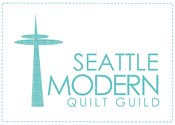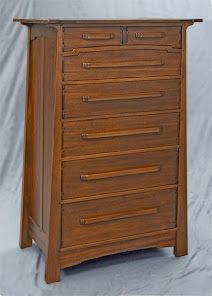Kind of boring results!
I left the blackberries rolled up in the fabric for several days - until the fruit flies were starting to get thick and the whole concoction was beginning to ferment!
I think I made a mistake by washing the fabrics with synthropol in the machine and drying in the dryer. They ended up just a boring purplish grey. Hmmm. The one pictured above is the darkest of the group.
in the machine and drying in the dryer. They ended up just a boring purplish grey. Hmmm. The one pictured above is the darkest of the group.
Off I went to get more blackberries.I took the two fat quarters that were the lightest in color and slathered them with the fresh blackberries (I didn't freeze them this time and I wonder if that made the difference in the color I witnessed) and mashed them in. This time the color was definitely redder. I rolled the whole mess up and let them sit for a whole week!
When I unrolled I rinsed them really well in the sink, catching the seeds in a sieve.
I let them dry and then gingerly ironed them - I was worried the heat might change the color, but it didn't.
I'm really pleased with the results this time -
I rinsed off the captured slurry of blackberries and tried to separate the seeds from the pulp. I wanted just the seeds, but it was too much work to get it all off, so I rinsed as best I could then spread the seeds over a fat quarter that had been prepared for 'flower pounding' with alum and soda ash. I sandwiched the seed-covered fabric in plastic and ran it through my etching press.
with alum and soda ash. I sandwiched the seed-covered fabric in plastic and ran it through my etching press.
The press tends to take all the liquid and push it to one end. It was fun, I could hear the little seeds exploding. I thought there would be some kind of liquid in the seeds that would burst open and squirt it's essence onto the fabric and I'd get...well, who knows what I'd get!
The purple juice that was developing this time was definitely different than the juice from the berries. It's more purple. I rolled it up and left it for several days.
Look at that color!
But, what I got was probably the opposite of what I was expecting. The seeds acted as a 'resist', meaning there was color around the seeds and little white spots where the seeds were embedded into the fabric. I hope you can see that in the photo. It's a very interesting texture.
Sorry, my camera doesn't like closeups! But I think you can see what I mean.


























